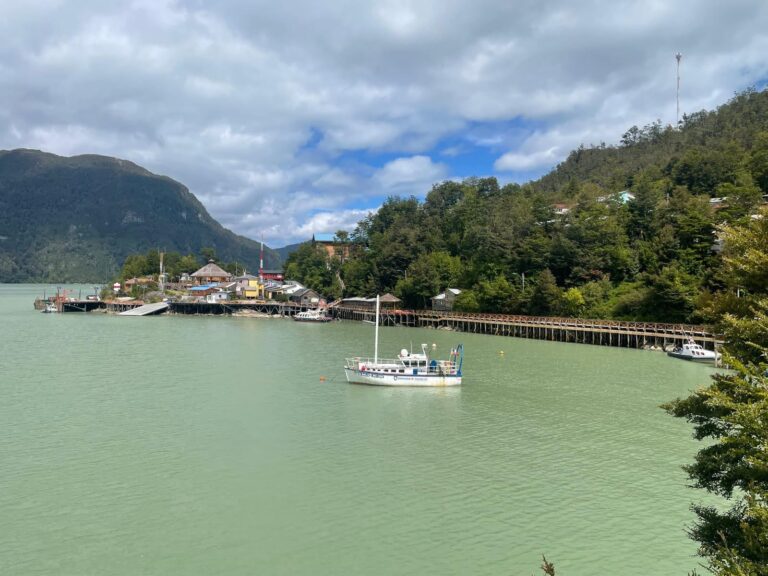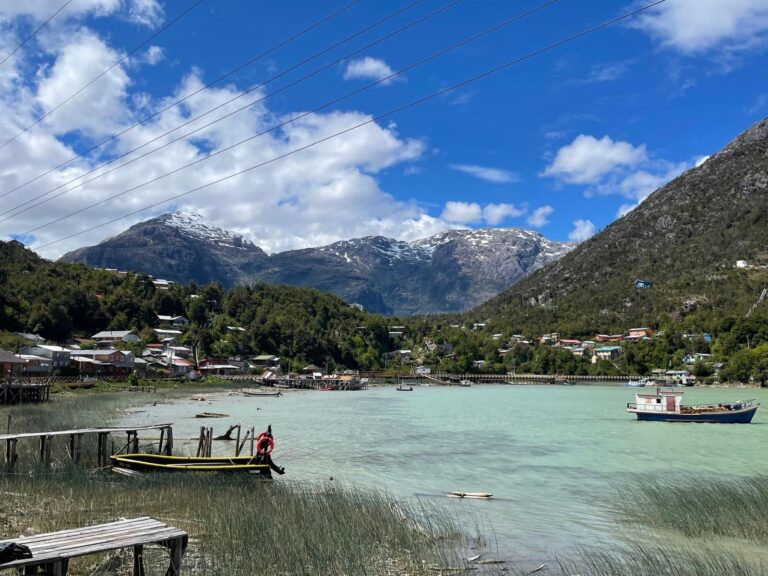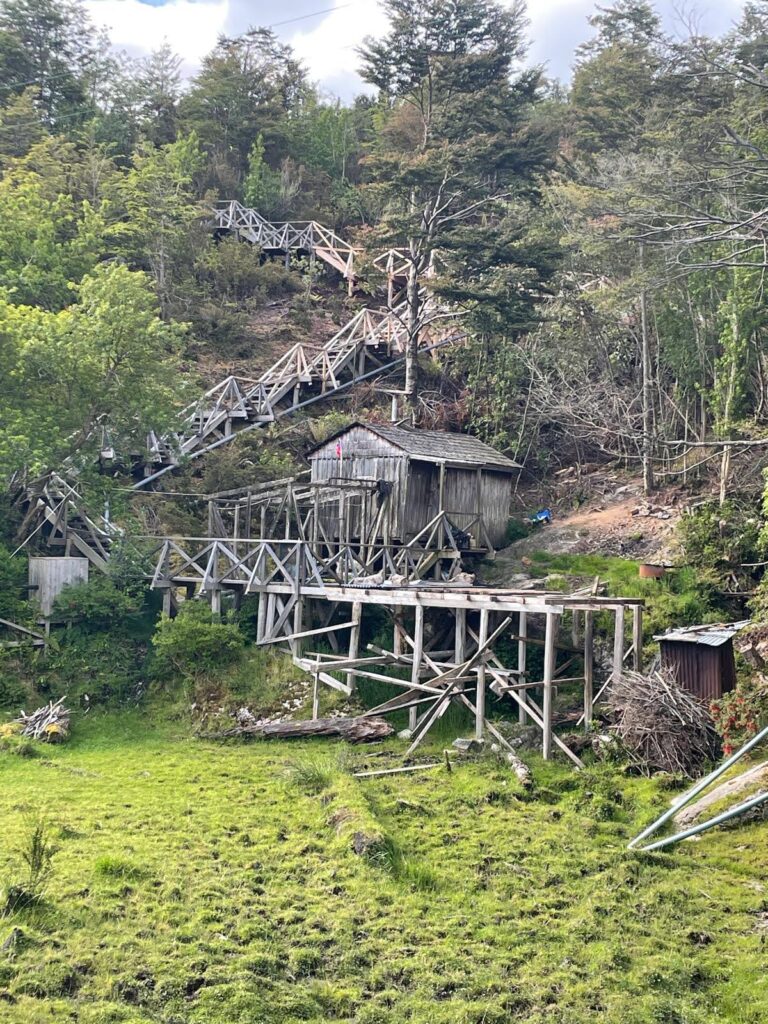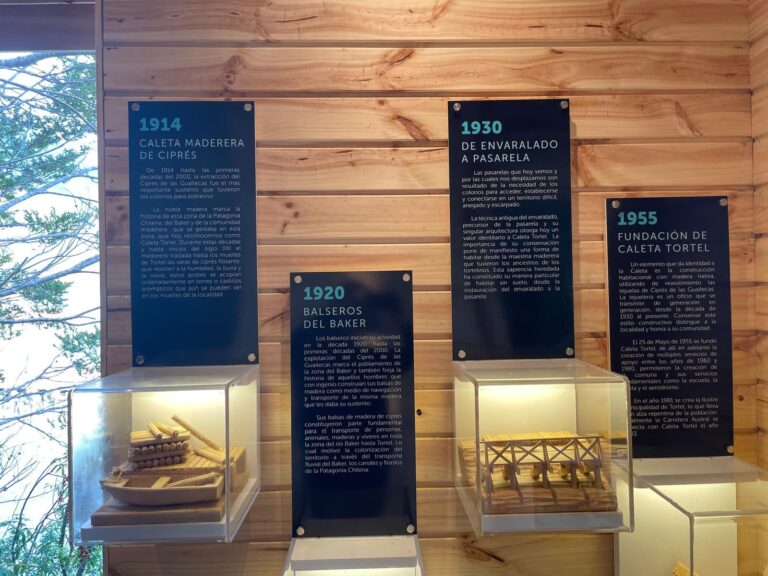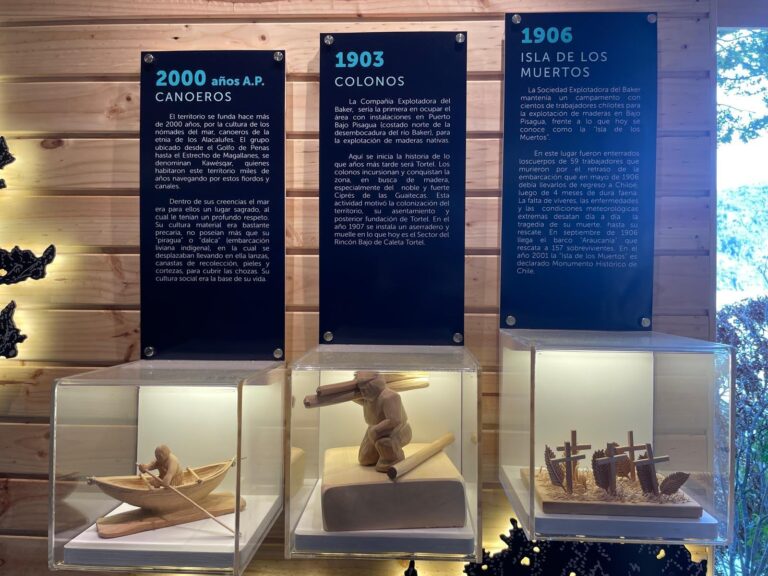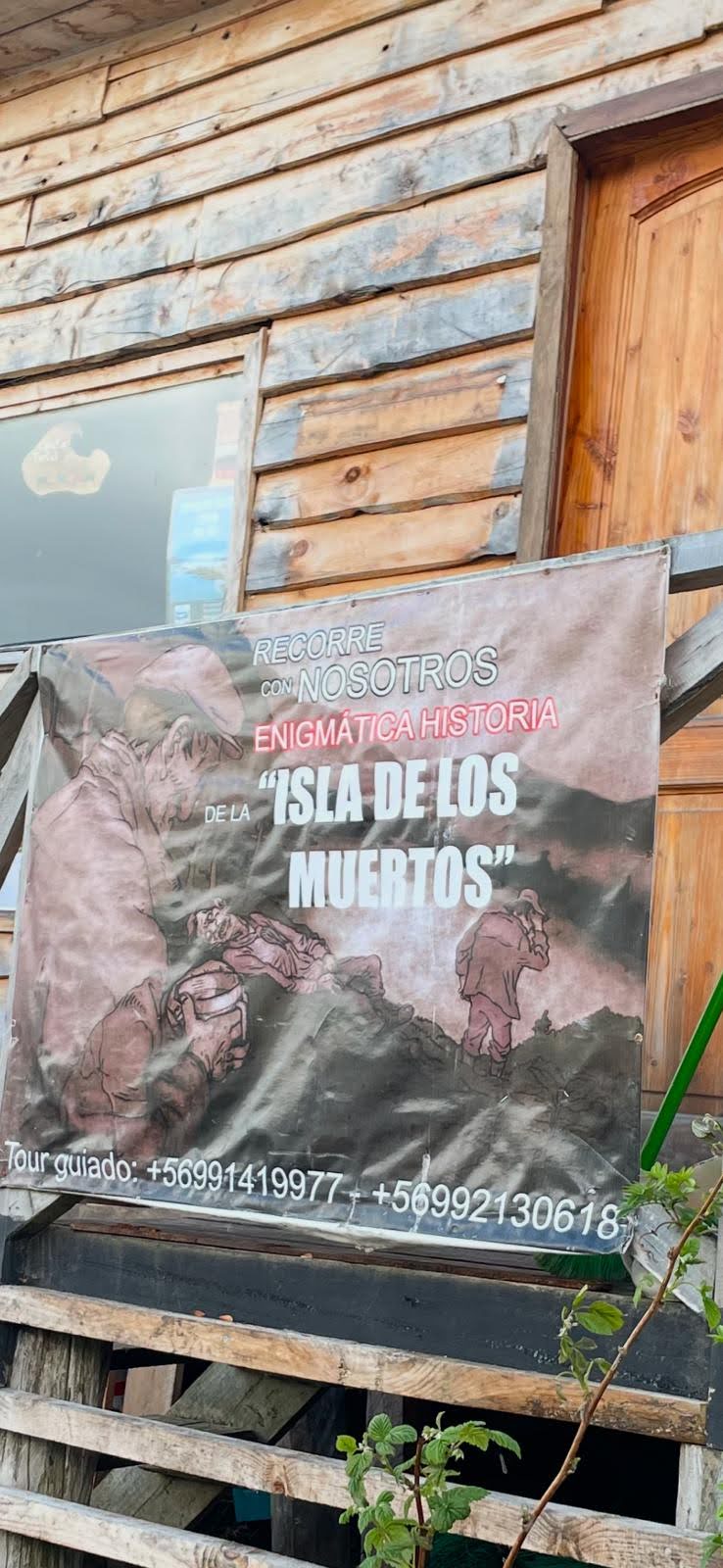
DECEMBER 8: A BIT OF REST
December 8, 2024
As the previous writer mentioned, the town of Caleta Tortel is incredibly unique, so last night we decided to stay an extra, unscheduled day to catch our breath after the long and challenging stage from the day before.
The town is built along three or four inlets of the rocky coast, all connected by an intricate system of boardwalks and stairs that weave up and down, stretching a total of 7 kilometers. It was absolutely worth stopping to explore.
We spent the day walking, reading, chatting with locals (using our very limited Spanish), and enjoying the hospitality of our delightful hosts, Francisca and Lazaro. We also made some visits, including one to the Open-air Museum organized by the Comunidad in collaboration with the University of Concepción. The university has a facility here dedicated to studying the marine environment and its relationship with the perennial glaciers that extend down to the sea.
The museum’s section on the history of Caleta Tortel was particularly interesting. The town was first settled at the beginning of the 20th century and began developing its unique boardwalk system in 1930. It was officially recognized as a community in 1955.
One fascinating story tied to the area is the 1906 tragedy of Isla de los Muertos (Island of the Dead), located near Caleta Tortel. Three years earlier, in 1903, a British company had started logging operations there, harvesting and selling valuable timber. However, accounts differ on what happened.
The group split into two camps regarding the story:
- The “believers” (a group that includes today’s writer) sided with the official account presented by the Open-air Museum. According to this version, a community of workers and their families—about 200 people in total—was left without supplies. Winter storms prevented ships from reaching the island from northern ports throughout the southern winter, leading to the death of about 50 people from hunger and disease.
- The “conspiracists” believed the popular version: that the company deliberately withheld supplies during the long four-month winter to avoid paying wages to workers who would, in the meantime, perish.
We’ll never know the truth, but the mystery certainly helps attract tourists. For a hefty fee of 30,000 pesos, visitors can take a tour to Isla de los Muertos near Caleta Tortel.
Overall, it was another memorable day. Caleta Tortel is a strangely under-promoted gem that is a must-visit for anyone in this part of the world. While accommodations are basic and lack major comforts, that doesn’t detract from the town’s uniqueness or the emotions it leaves behind.
